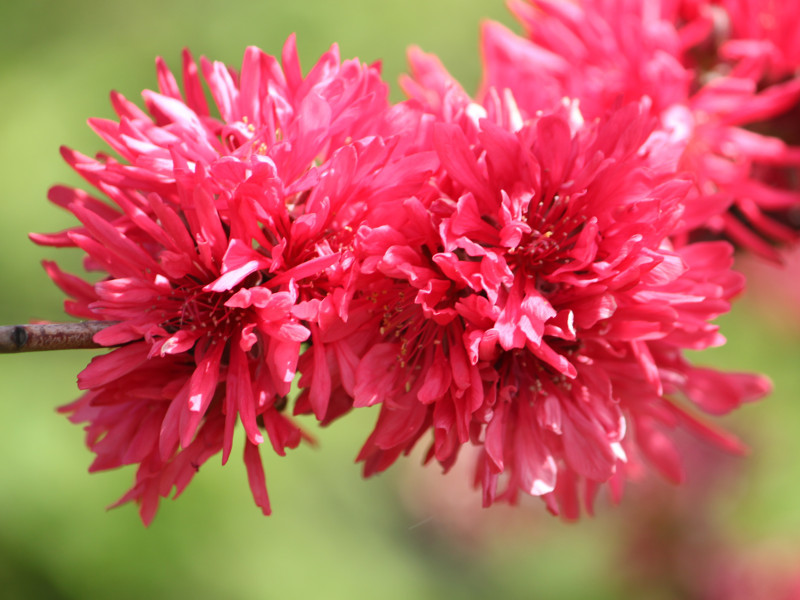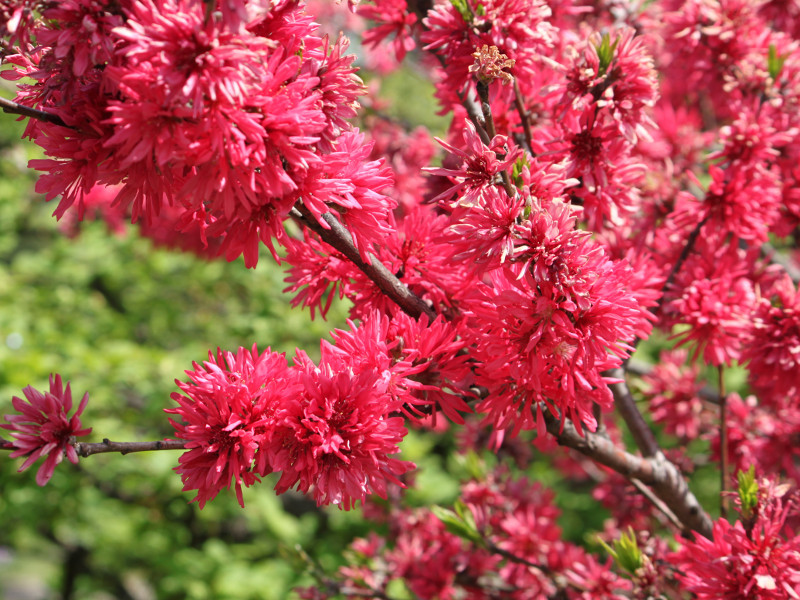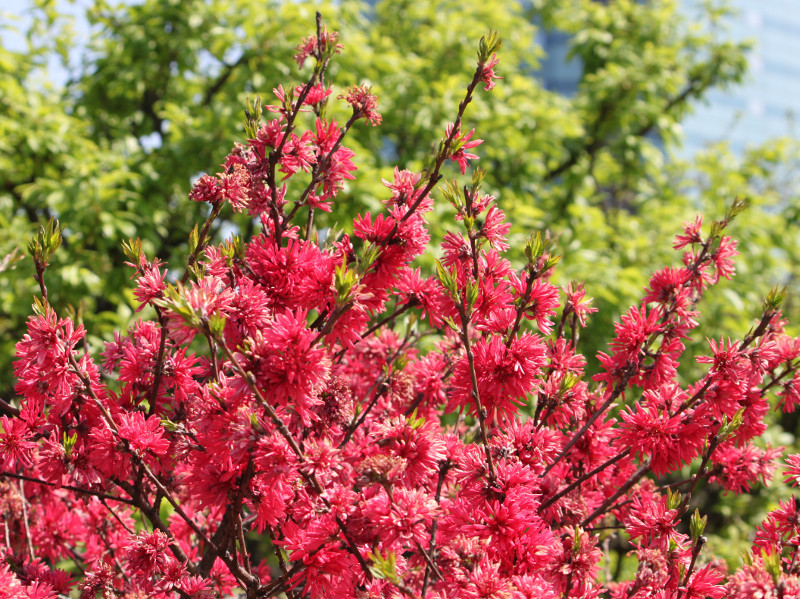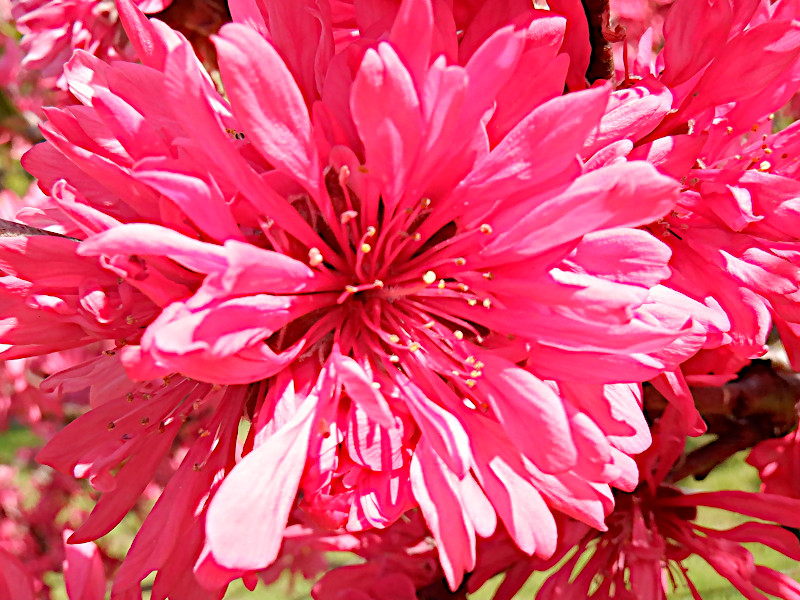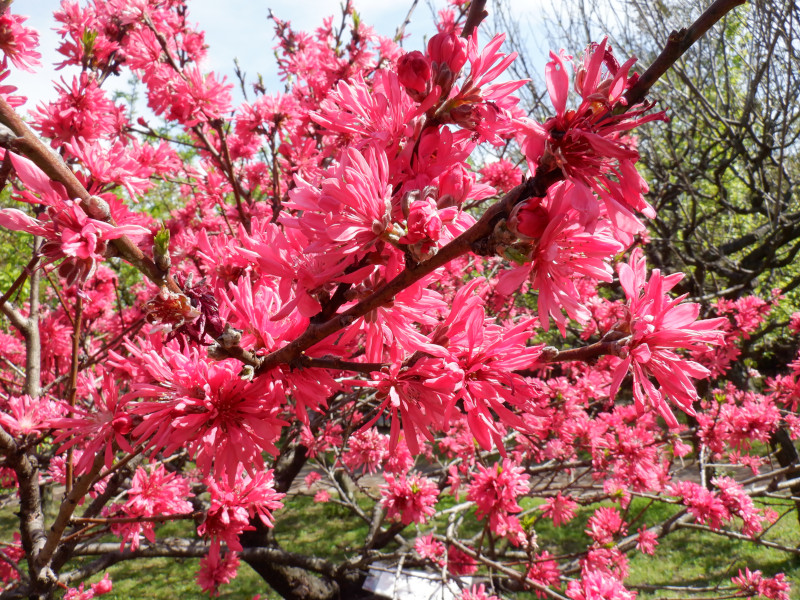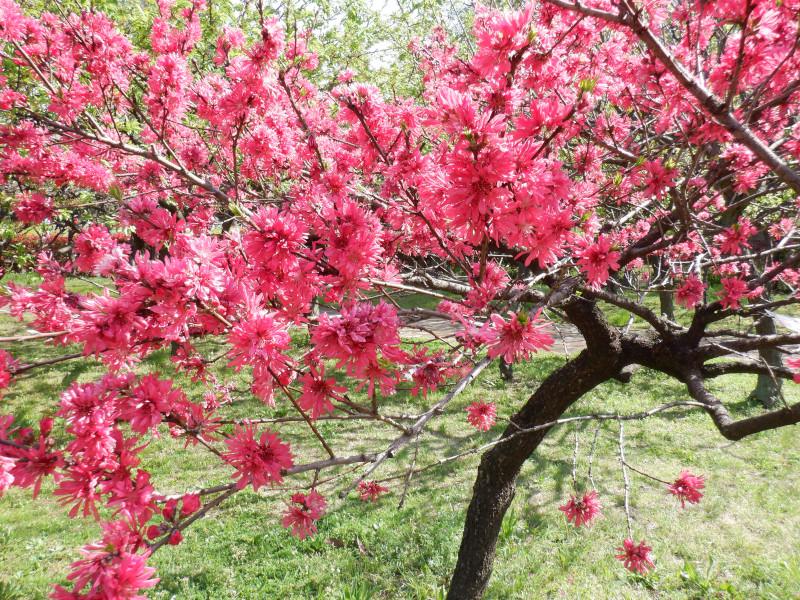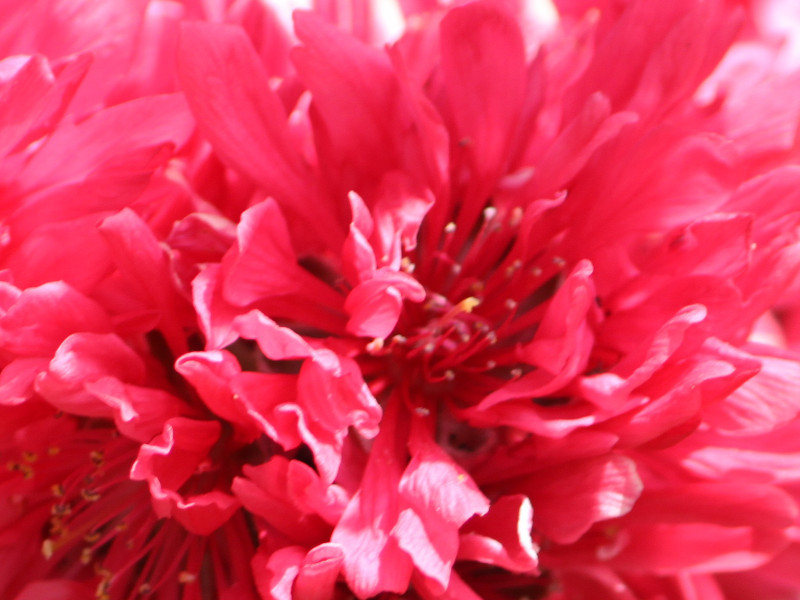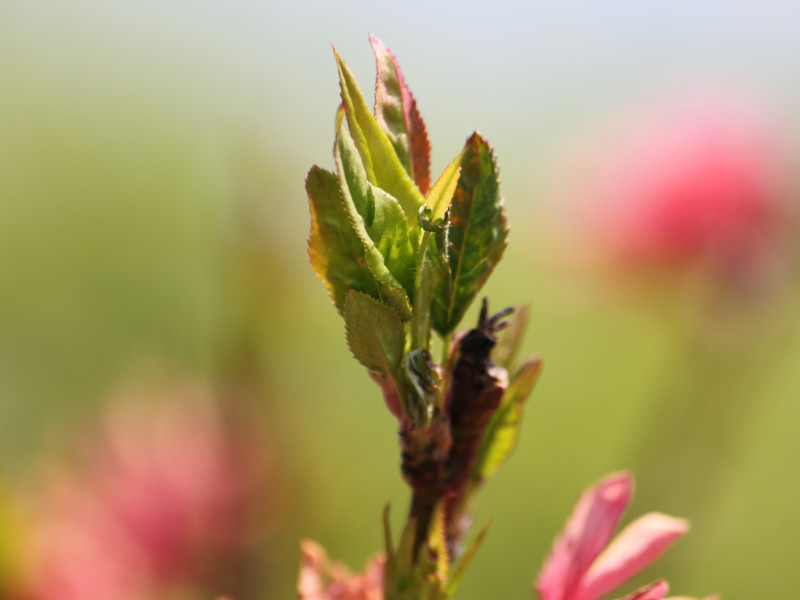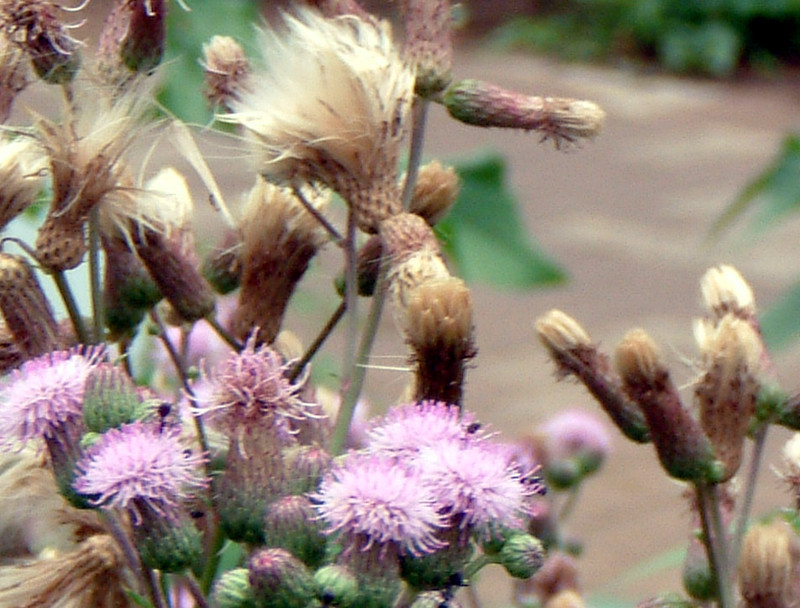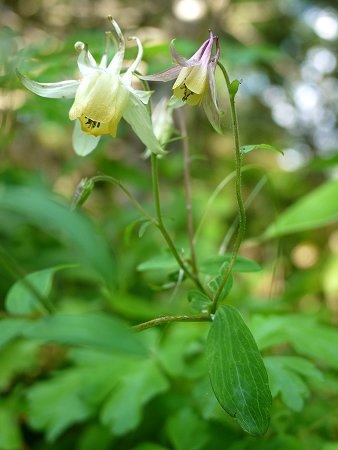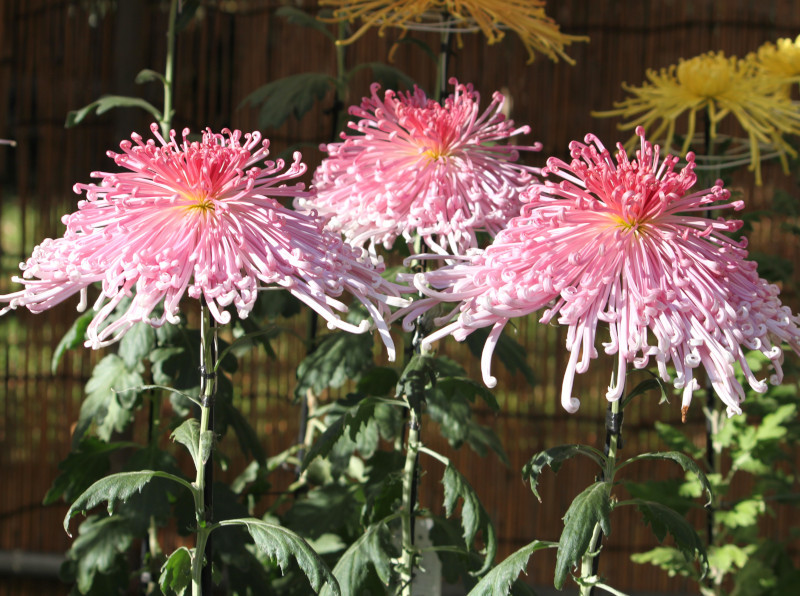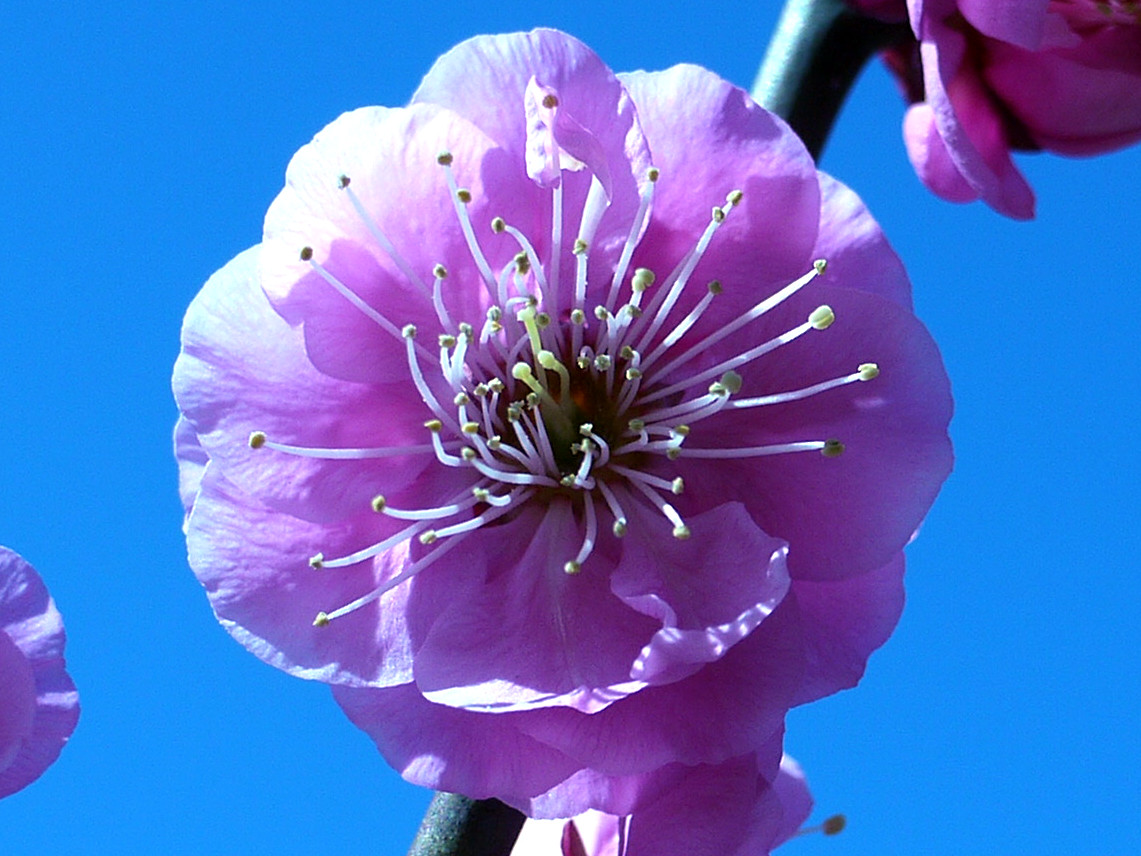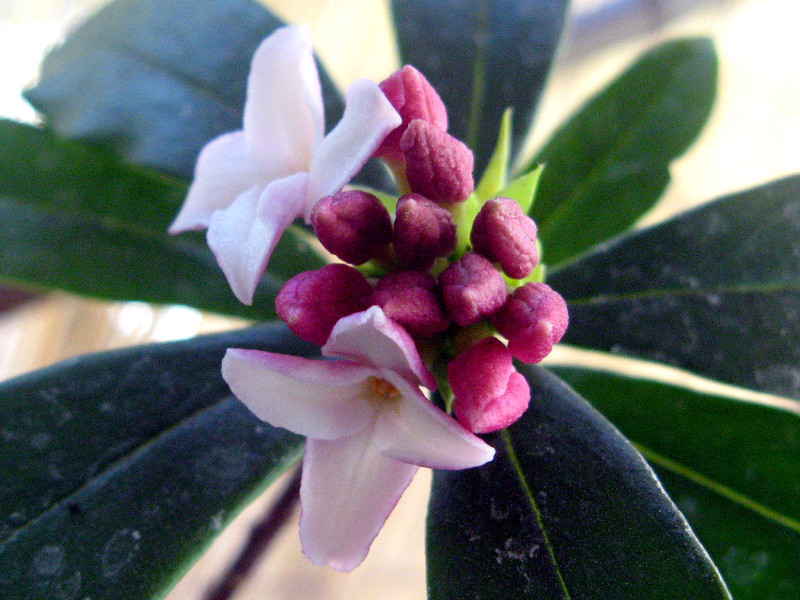Stellata
- Flower nameStellata
- Scientific namePrunnus persica cv. Stellata
- Aliasゲンジグルマ, 菊桃, 源氏車, 京舞妓
- Place of originHorticultural varieties of Japan
- Place of floweringGarden, Cut flowers, flower arrangement
- Flowering seasonMarch, April
What is Stellata
Kikumomo or Stellata(Scientific name: Prunnus persica cv. Stellata, Synonims: Amygdalus persica cv. Stellata), is one of the horticultural varieties of "Hanamomo (scientific name: Prunus persica)" within the Rosaceae family, Prunnus genus, originating from China.
It is a deciduous shrub of the Prunus persica species, known for its flowers rather than fruits, favored by Stag Beetles and Rhinoceros Beetles. It grows to a height of 200-300 cm, with branches thinner than those of peaches, and the tree forms a compact shape. The leaves are slender lanceolate with serrated margins and are arranged alternately. Leaves emerge after the flowers have bloomed and wilted. From March to April, it produces beautiful flowers resembling chrysanthemums with dense clusters of double blooms about 3-4 cm in diameter, in a deep red color, along the previous year's branches. The double petals are finely divided. The fruits ripen from July to August. Red-flowered varieties are called "Kyomai-geisha ('Stellata')" in Japanese, while peach-colored varieties are named "dancers" or "Kasumi-no-sato." The fruits are small and not suitable for consumption.
Origin of the Name:
Japanese name "Kikumomo" is based on the fact that the slender and pointed petals resemble chrysanthemum flowers. The genus name "Prunus" is Latin for "plum tree", the species epithet "persica" means "of Persia", and the cultivar name "Stellata" means "of the starry sky".
Flower Language:
"Excellence," "Solidity," "Integrity."
Birds and Insects Visiting Chikumomo:
Birds like Japanese White-eyes and sparrows come to feed on the nectar of Kikumomo flowers. While Japanese White-eyes, with their long beaks, do not cause much damage, sparrows, with their short beaks, drop the flowers before feeding on the nectar, causing inconvenience.
Insects that feed on Chikumomo leaves include the moth "Coskashiba," with a dark green glossy body and transparent wings, and the moth "Momosuzume," with a brown triangular shape.
Same Scientific Name:
Both peach, Hanamomo, and Chikumomo share the same scientific name: Prunus persica. Only Chikumomo's horticultural variety is distinguished by 'Stellata' in the cultivar name. Ideally, they should all be listed under "peach."
Common Name: Kikumomo (Scientific Name: Prunus persica cv. Stellata, Synonym: Amygdalus persica cv. Stellata, Classification: Angiosperms, Eudicots, Rosids, Rosales, Rosaceae, Prunus, Prunus persica, Chikumomo variety, Growth Form: Deciduous shrub, Origin: Horticultural variety, Height: 200-300 cm, Growth Habit: Upright, Bark Color: Brown creeping, Branches: Develop white stripes, Leaf Color: Green, Leaf Shape: Lanceolate, Leaf Arrangement: Alternate, Leaf Margin: Serrated, Flowering Period: March to April, Flower Color: Red, Flower Diameter: 3-4 cm, Flowering Style: Double, Uses: Ornamental plant, Cut flower.
